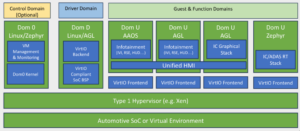

Dashveenjit is an experienced tech and business journalist with a determination to find and produce stories for online and print daily. She is also an experienced parliament reporter with occasional pursuits in the lifestyle and art industries.
The cellular IoT module market recorded 23% year-over-year (YoY) growth in Q1 2025, according to IoT Analytics’ Global Cellular IoT Module and Chipset Market Tracker & Forecast. This growth trajectory represents the fifth consecutive quarter of expansion for the industry, indicating recovery from the inventory correction challenges that affected the sector throughout 2023.
The growth figures show how the cellular IoT module market has navigated through previous headwinds. “This marks the fifth straight quarter of shipment growth as inventory correction drives renewed demand,” the report states.
The recovery builds upon 2024’s momentum, which saw a 15% YoY increase in shipments, a turnaround from the challenging 2023 period that concluded with a 16% market decline.
A senior executive at Telit Cinterion, quoted in the report, emphasised the market’s transformation: “The inventory situation cleared up. This marks a return to a growth trajectory for the company.” This sentiment reflects the broader industry experience, as elevated stock levels that had constrained demand throughout 2023 have finally normalised.
To appreciate the cellular IoT module market’s importance, consider that in 2024, there were 18.8 billion IoT connections globally. Of these, approximately four billion connections—representing 22%—utilised cellular IoT connectivity.
Among these cellular connections, 83% (approximately 3.3 billion) relied on pre-fabricated cellular IoT modules, while the remaining 17% integrated cellular connectivity directly through chipsets.


Geopolitical tensions reshape the competitive landscape
The market’s growth story is increasingly intertwined with geopolitical developments. Quectel, the clear global leader holding a 40% market share, found itself added to the US Department of Defense’s 1260H List in January 2025.
This listing identifies “Chinese military companies” operating in the United States and has created ripple effects throughout the supply chain. Despite the regulatory scrutiny, Quectel maintained its leadership position with 31% YoY shipment growth in Q1 2025.
However, the listing has prompted Western device manufacturers to reassess their sourcing strategies. “Quectel’s listing on the 1260H list has become a key discussion point in customer meetings,” noted a senior executive at a Western IoT module vendor during an interview with IoT Analytics. “Many [device manufacturers] aren’t reacting immediately, but they’re certainly reviewing their sourcing strategies more seriously now.”
Top players and market concentration


The cellular IoT module market shows significant concentration, with the top five companies accounting for 73% of global shipments in Q1 2025. Following Quectel’s 40% share, China Mobile secured second place with a 15% market share, achieving 100% year-over-year growth driven by LTE CAT 1 bis module deployment.
Fibocom holds an 8% market share with 28% growth, while Sunsea AIoT commands 5% with a modest 5% growth. Telit Cinterion represents the only Western vendor in the top five, maintaining a 4% market share with 10% year-over-year growth.
Strategic market shifts and new entrants
The market is witnessing significant strategic realignments beyond geopolitical pressures. Switzerland-based u-blox unexpectedly announced its exit from the cellular IoT module business through a two-part divestiture completed in 2025.
This exit, while representing only 1.1% of global revenue, has created opportunities for Western suppliers as former U-blox customers evaluate alternatives. Meanwhile, new market entrants are emerging to address supply chain concerns.
Eagle Electronics, an Ohio-based startup backed by licensing agreements with Quectel, launched a production facility in Solon, Ohio, in December 2024. “Eagle Electronics is a fully independent company,” explained CEO TJ Dembinski during an interview with IoT Analytics.
“We have our own module manufacturing facility for our brand ‘Eagle Electronics.’ We are focused on 4G modules and currently use Quectel reference designs.”
Regulatory pressures drive innovation
The European Union’s Radio Equipment Directive (RED) is introducing new cybersecurity requirements that take effect on August 1, 2025. These regulations mandate secure boot, encrypted communications, firmware update mechanisms, and protection against unauthorised access for all radio equipment sold in the European Economic Area.
“The updated RED Directive adds a whole chapter of cybersecurity requirements,” explained a senior executive at Telit Cinterion. “While the end devices are the primary focus, compliance will require new features at the module level.”
This regulatory shift is expected to favour transparent, standards-aligned Western suppliers over some Chinese vendors who may face compliance challenges.
Technology trends driving growth
Two key technologies are particularly driving market expansion, according to IoT Analytics. LTE Cat 1 bis shipments grew 122% year-over-year, gaining traction as a globally compatible, cost-effective alternative to NB-IoT and LTE-M.
As Abhinand Dinesh, Senior Associate for Corporate Marketing at Cavli Wireless, noted: “LTE CAT 1bis adoption is rising sharply… It offers a cost-effective, globally compatible alternative with sufficient performance for most IoT applications.”
Simultaneously, 5G module shipments increased 36% YoY, expanding in fixed wireless access, automotive C-V2X, and industrial applications. The emerging 5G RedCap technology is positioning itself as a solution for mid-tier IoT applications, balancing cost, power, and performance requirements.
Market outlook and implications
IoT Analytics projects the cellular IoT module market will continue growing at 17% year-over-year in 2025. However, the industry faces a complex landscape where geopolitical tensions, regulatory requirements, and technological evolution intersect.
“2025 is a setup year—full supplier transitions and redesigned architectures may follow in 2026,” the report concludes. While Western suppliers are gaining ground on security and local production capabilities, price gaps remain a significant challenge compared to Chinese competitors.
The cellular IoT module market’s 23% growth reflects the sector’s underlying fundamentals, but success will increasingly depend on navigating geopolitical complexities, regulatory compliance, and technological innovation.
As device manufacturers reassess their supply chains and new players enter the market, the industry appears poised for continued evolution throughout 2025 and beyond.
(Image credit: Sahand Babali)
See also: Cellular IoT module revenue sees 8% quarterly rise but small YoY drop, says Counterpoint


Want to learn about the IoT from industry leaders? Check out IoT Tech Expo taking place in Amsterdam, California, and London. The comprehensive event is co-located with other leading events including Cyber Security & Cloud Expo, AI & Big Data Expo, Intelligent Automation Conference, Edge Computing Expo, and Digital Transformation Week.
Explore other upcoming enterprise technology events and webinars powered by TechForge here.
Tags: cellular, connectivity, iot




